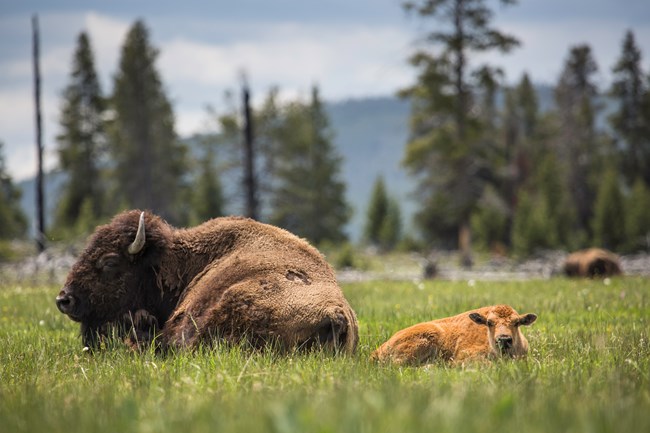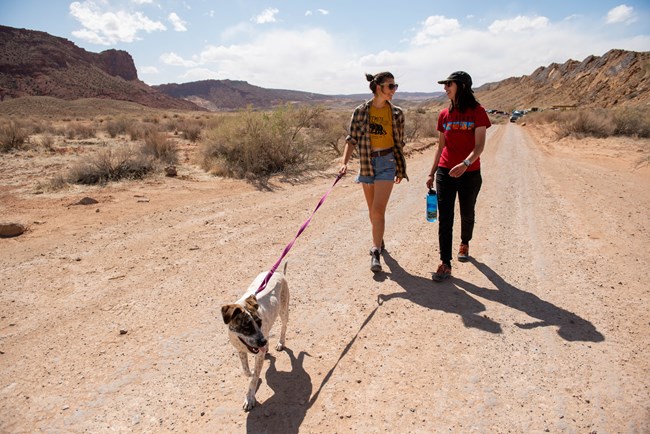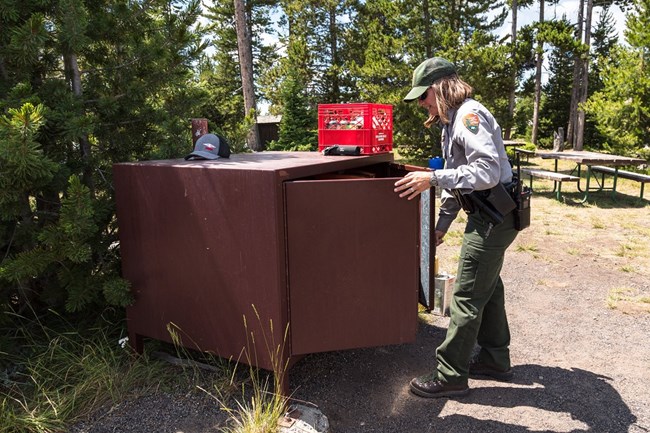Smart Wildlife Watching Protects Wildlife
Watching wildlife safely is the responsibility of all park visitors. When you visit national parks, you are entering animals’ habitat and should behave like a polite guest. In fact, the safety and health of wildlife depends on the thoughtful choices park visitors make.
Wildlife face some serious risks when humans get close enough to interact with them:

NPS Photo / Neil Herbert
Consequences of Physical Contact with People
Although many wildlife appear tame, they are not. It is important to resist the urge to pet and hold them. In fact, some animals, from bison to birds, may be rejected by their parents if they have contact with humans, making them more vulnerable to predators or other harmful situations. In addition, wildlife can get injured when they try to escape people who have gotten too close, especially if they are near human structures or roads. Wildlife that get used to being around people and developed areas such as picnic areas and campgrounds also are at greater risk of eating human food and catching diseases from people and pets or giving diseases to humans and their pets.

NPS / Veronica V.
Fatal Diseases from People and Pets
Our domestic pets can also pose real dangers to the wildlife within parks. Both pets and people may have diseases that they can give to wildlife. Sadly, there are many examples of wildlife in parks dying from diseases given to them by pets and humans. For example, heartworm from dogs and cats can kill wildlife such as foxes, wolves, coyotes, bobcats, and mountain lions. Black-footed ferrets die from the flu if humans are sick and get too close. Wolves can be infected by canine parvovirus from dogs and many animals can be affected by toxoplasmosis, which is carried by cats. Pro tip: Keeping your pets vaccinated can keep them and wildlife safe.

NPS Photo / Jacob W. Frank
Dangers of Eating Human Food and/or Trash
When visitors intentionally or unintentionally feed wildlife, it has negative effects on the wildlife. Whether visitors offer scraps and crumbs to birds and other wildlife or simply forget to secure their trash, risks to wildlife from eating human food are great. Some of the dangers to wildlife include shorter lives and poor nourishment. The best way for wildlife to have a healthy diet and live healthy lives is to hunt, forage, or scavenge for food as they would naturally. Relying on human food (which includes trash left out!) puts wildlife at risk. Human food can also boost some animal populations, which can then result in increased predation on threatened and endangered species like the marbled murrelet or piping plover.
Learning to eat human food can also change the way that wildlife interact with people. The process of wild animals becoming used to and attracted to human food is called “food conditioning.” Food-conditioned animals actively seek out human food, which in the worst cases can make them dangerous. Ground squirrels can bite, deer have sharp hooves and antlers, and bears can rip into cars or tents in search of food. Unfortunately, food-conditioned wildlife that become too aggressive must be removed, which can include being humanely killed by park managers for safety reasons.
- Duration:
- 4 minutes, 8 seconds
Watch this illustrated stop motion video about food conditioning, habituation, and what you can do to help keep the wild in wildlife!
Respect Wildlife
It’s important to understand how your actions may affect the wildlife in parks. When you respect wildlife by following the 7 Ways to Safely Watch Wildlife, you help protect park animals and yourself.
Last updated: September 12, 2024
